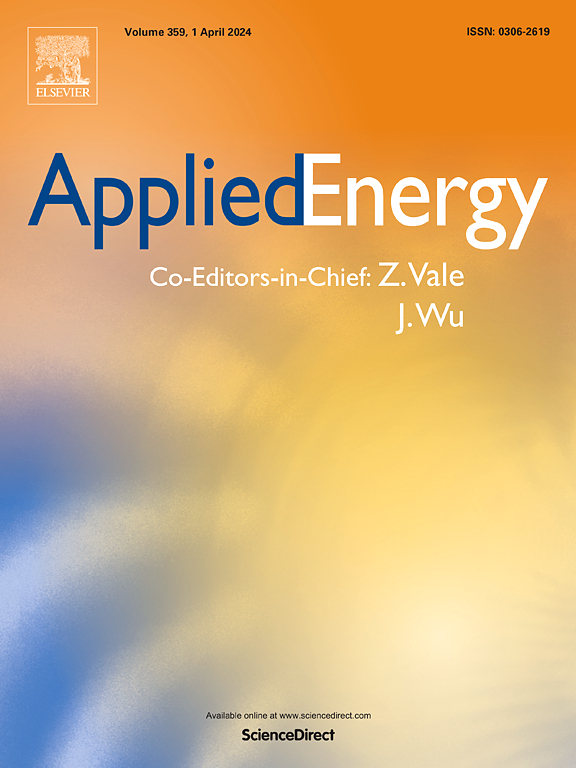Degradation behavior of ionomer in the cathode catalyst layer of polymer electrolyte fuel cells
IF 10.1
1区 工程技术
Q1 ENERGY & FUELS
引用次数: 0
Abstract
Ensuring the durability of proton exchange membrane fuel cell (PEMFC) stacks is crucial for their commercial viability. Dynamic loading conditions can significantly accelerate the aging of the fuel cell's catalyst layer (CL), and ionomers play a pivotal role in maintaining both proton transport performance and the durability of this layer. A 1 kW PEMFC stack was subjected to a rigorous 3000-h New European Driving Cycle accelerated stress test to assess the relationship between the evolution of ionomer characteristics and the loss of proton transport performance of the cell. Extensive analyses revealed that degradation within the CL occurs in both in-plane and through-plane directions. The rapid deterioration of ionomers is closely linked to the decline in performance of the membrane electrode assembly. Following degradation, we observed a reduction in the mechanical strength of the ionomers and deterioration of their chemical structure, with side chains degrading more significantly than the main chains. Moreover, the average thickness of the ionomer layer on the catalyst surface decreased, leading to reduced coverage of the catalyst. This study reveals how ionomer degradation contributes to the loss of proton transport networks and pore structures within the CL. These insights will provide a theoretical foundation for the design of more durable CL.
确保质子交换膜燃料电池(PEMFC)堆的耐用性对其商业可行性至关重要。动态负载条件会显著加速燃料电池催化剂层(CL)的老化,而离子聚合物在保持质子传输性能和催化剂层耐久性方面发挥着关键作用。对 1 kW PEMFC 堆进行了严格的 3000 小时新欧洲驾驶循环加速应力测试,以评估离子膜特性的演变与电池质子传输性能损失之间的关系。广泛的分析表明,CL 内的降解发生在平面内和贯穿平面两个方向。离子膜的快速退化与膜电极组件性能的下降密切相关。降解后,我们观察到离子聚合物的机械强度降低,化学结构恶化,侧链比主链降解得更明显。此外,催化剂表面离子膜层的平均厚度减少,导致催化剂的覆盖率降低。这项研究揭示了离子膜降解如何导致 CL 内质子传输网络和孔隙结构的丧失。这些见解将为设计更耐用的 CL 提供理论基础。
本文章由计算机程序翻译,如有差异,请以英文原文为准。
求助全文
约1分钟内获得全文
求助全文
来源期刊

Applied Energy
工程技术-工程:化工
CiteScore
21.20
自引率
10.70%
发文量
1830
审稿时长
41 days
期刊介绍:
Applied Energy serves as a platform for sharing innovations, research, development, and demonstrations in energy conversion, conservation, and sustainable energy systems. The journal covers topics such as optimal energy resource use, environmental pollutant mitigation, and energy process analysis. It welcomes original papers, review articles, technical notes, and letters to the editor. Authors are encouraged to submit manuscripts that bridge the gap between research, development, and implementation. The journal addresses a wide spectrum of topics, including fossil and renewable energy technologies, energy economics, and environmental impacts. Applied Energy also explores modeling and forecasting, conservation strategies, and the social and economic implications of energy policies, including climate change mitigation. It is complemented by the open-access journal Advances in Applied Energy.
 求助内容:
求助内容: 应助结果提醒方式:
应助结果提醒方式:


